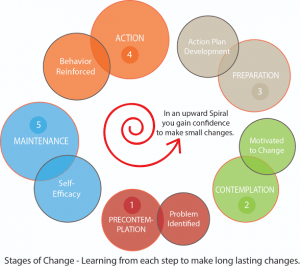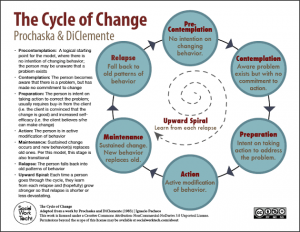A 49-year-old woman presents to the clinic for a routine exam. She recently quit smoking after a 30-pack-year history and started exercising a little. Past medical history is noncontributory. She takes no medication. Her mother died at 65 from lung cancer. She rarely drinks alcohol and only uses nicotine gum as needed. She admits to having some cravings for a cigarette in the morning before and after work. Which of the following best describes this patient’s stage in managing her nicotine addiction and why?
A. Relapse
B. Maintenance
C. Precontemplation
D. Contemplation
E. Action





This patient is in the maintenance stage of change. The Stages of Change model was developed in 1977 by Drs. Prochaska and Di Clemente. The number and names of the stages have changed over time to include 6 stages in the cycle: precontemplation, contemplation, preparation, action, maintenance, and relapse. An individual with a substance use disorder can cycle through all of the stages several times during their path to recovery.
The maintenance stage is a time to recover and heal. This can be physical healing, financial healing, social healing, or even spiritual healing. These patients require extra support to maintain their new lifestyle. There will be many opportunities to fall back into bad behaviors such as stressful life events and anniversaries. Even an anniversary of sobriety could trigger a relapse